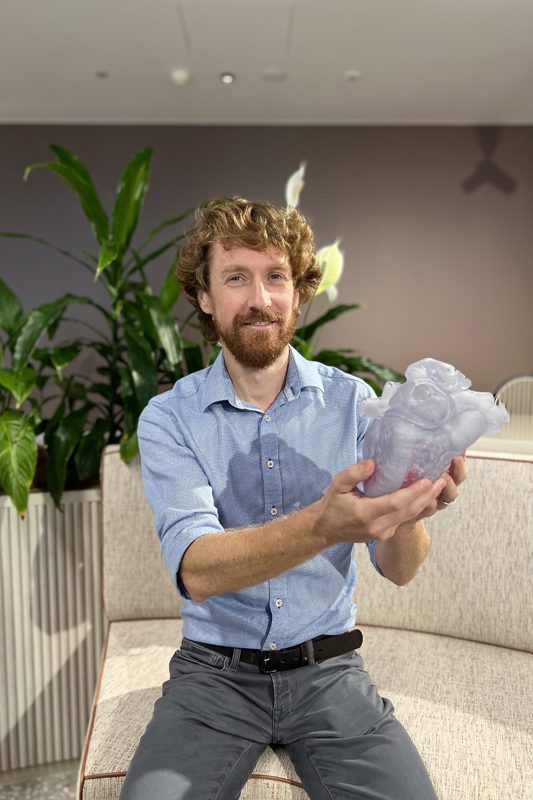HBI engineers modelling patient-focussed care as they lend skills to Queensland surgery colleagues
Herston Biofabrication Institute (HBI) continues to expand its 3D printing capability and innovation for surgical planning, now assisting colleagues across the state.

HBI engineer David shows off 3D heart model
Some of the team’s engineers have recently lent a helping hand to the Sunshine Coast University Hospital (SCUH) to assist with a unique surgical planning model for a complex cardiac case.
The SCUH patient, who has congenital cardiac abnormalities which require surgery, has had an exact to-scale model of her heart created by the HBI team.
Using CT scans, Advanced Biomedical Engineer David and his peers were able to build a 3D model of her heart which was then 3D printed at the Herston Biofabrication Institute in a transparent photo-curing resin. David said HBI is one of the few places in Australia which could create a model of this type based on the advanced software and printing requirements, as well as the expertise required to get the model right.
“We now have a to-size replica of the patient’s heart, which we have been able to give to the medical team so they can plan her surgery,” David said.
“We have been able to provide a few surgical planning heart models for various patient cases and the feedback has been that these are so important, as endovascular surgery is complex and there are many valves and arteries to consider.
“It could be difficult for a surgeon to hold a 3D image in their mind while in surgery, based on the 2D imaging, however these models are just another tool that can assist them beforehand and when they are in this kind of procedure.”
The HBI team have produced approximately six heart models like this one for various patient cases so far, each requiring multiple iterations to perfect the model, in collaboration with the surgical team.
For David, the ability to provide security for both the treating team and patient makes it all the worthwhile.
“This type of model can make a huge difference to the outcome, as some teams can be reluctant to operate without it, so this means patients can confidently undergo surgery and start to feel better,” he said.
HBI continues to invest in combining engineering and medical expertise to develop new medical devices and constructs with a direct pathway to translation in clinical practice.
